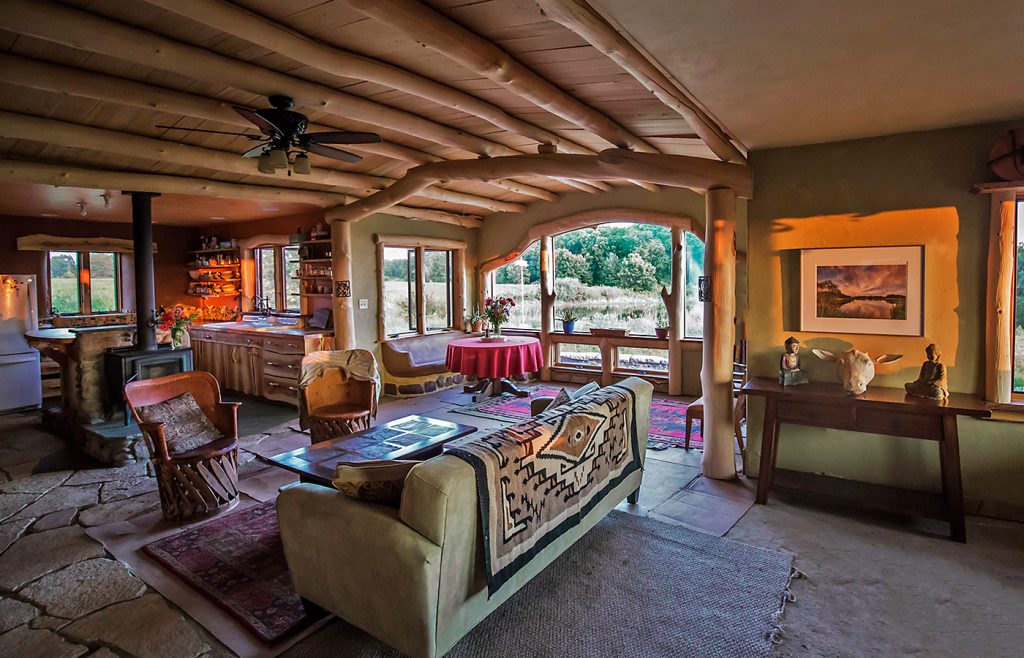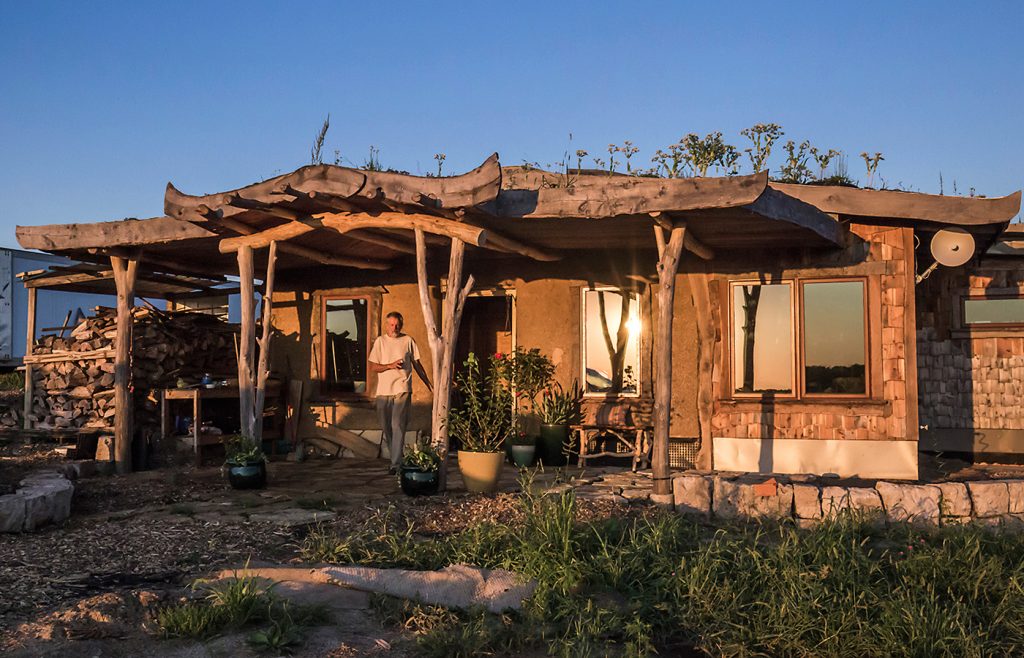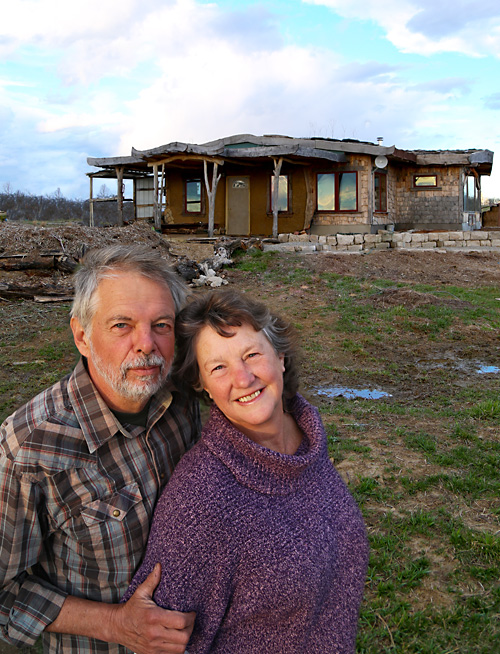
John Freeburg and Susan Walch invite visitors to an open house for their unusual dwelling on Saturday, May 19, 2018, 10 a.m. to 4 p.m. The FarmHouse is located at 2329 Kale Blvd., Fairfield.
Earth artisan Susan Walch and I set out to build a house. After five years of hard, joyful work, we moved into the FarmHouse, a home that visitors describe as “enchanting,” “stunning,” and a “work of art.” Here’s our story.
For years, we had searched the rolling hills near Fairfield for the perfect site, until a hardscrabble farm of 54 acres presented itself. It offered land for orchards, pasture, and gardens, plus timber for respite and shelter. We chose a building site that offered views of the horizon in all directions, as well as an adjacent pond, a nearby woods, and an organic grain field with a wooded creek bottom.

The seed for the FarmHouse design emerged from a field of traditions—the Norsemen, Druids, Ancient Pueblo, and Mound Builders. In addition, the materials invited us to collaborate with them. The trees, stones, and earth quietly insisted that we uncouple from the chains of clocks and calendars. In return, they blessed us with architectural alchemy that turned the house into a wondrous celebration of nature.
If there is a single thematic center of the FarmHouse, it is “trees.” Approaching the house, one passes through an arbor of osage orange branches toward the stone-floor porch, framed with whole tree locust. The living room is framed with stout and lively hickory logs. Its three-part south window is edged with cherry half-logs in a style that an Indian friend tells us is drawn from the ancient design of Rajasthan.
The living room’s wooden ceiling, curved in a soft barrel vault, came from the woods within view of our house. The hickory trees were celebrated as they were debarked to reveal their tawny, rippled sapwood. Five years later, the trees continue to glow.
Much of the wood and timber used in the house has come from trees harvested on the farm and sawn into beautiful boards at a nearby sawmill. The kitchen cabinets are built of thorny locust boards with the natural edges preserved. Gnarly hickory boards have become character-rich trim for doors and windows. The breakfast bar is a curved slab of maple, rescued from the Skunk River.
Dividing the kitchen and living room is a wood-burning stove sitting on a hearth of stones scavenged from my grandpa’s farm in Wisconsin. These family treasures were lovingly crafted into a colorful, playful work of art by our mason-magician friend.
The floor is poured adobe—clay, sand, and cow manure. It offers a smooth, firm, nourishing support unlike any other material. Straw bales from a neighbor’s field became oversized building blocks that were plastered with earth. A bench of cob (earth, sand, and straw), sculpted for comfort, catches the morning sun.
The house has an earth roof painstakingly planted with sedum and supplemented serendipitously by the birds and the winds. The pond stores water for people, livestock, and agriculture. Solar panels render sunlight into electricity. Chestnuts, hazelnuts, peaches, and pawpaws are planted in former hay fields.

After a year of living in the FarmHouse, I have awakened to this reason for loving to live here: there is little distinction between the feeling indoors and out. The stone floor on the west porch began life as coral in the bed of an ancient ocean and it flows into the flagstone path leading through the house. The earth outside and the adobe floor inside are made of the same lovely clay. The curved living room ceiling silently connects the beholder to the arc of heaven. The whole trees of the framework supporting that ceiling are still home to tree spirits from the forest outside, which is visible through the window.
Roald Gundersen, of Whole Trees Architecture in Wisconsin, provided the inspiration and renderings that crystalized our vision. We have had the assistance of interns, an Amish wood shop, and the expert help of subcontractor-friends. But most of the work has been done by Susan and me. Our ancestors built shelter from logs, stone, clay, sod, straw. These local, healthy, beautiful materials are gifts from Mother Nature, and they lead the dweller back to her grace, joy, fullness. They sing and dance as they did in the days before electricity and agriculture. In this new configuration that we call the FarmHouse, their song and dance blesses the builders and their animals, the dwellers and the visitors from wide and varied realms.
John Freeberg and Susan Walch will host an open house on Sunday, May 22, noon to 4 p.m. at 2329 Kale Blvd., Fairfield. Take Main St. (Highway 1) south to AmericInn. Turn right on 227th St. for one mile, curve left onto Kale Blvd. to 2329. Go up the driveway to the top of the hill.
